
Refined plastics whose properties can be controlled in a targeted manner by one or more additives are referred to as compounds. The range of additives is long and varies from compound to compound. Of particular interest for raw material automation are reinforcing materials such as glass fibres, fillers (chalk, talc, etc.), pigments (titanium dioxide, oxides, etc.) and additives.
All these raw materials must be safely fed into the extrusion process in addition to the base polymer. This requires a corresponding raw material automation system that meets the special properties of the various additives.
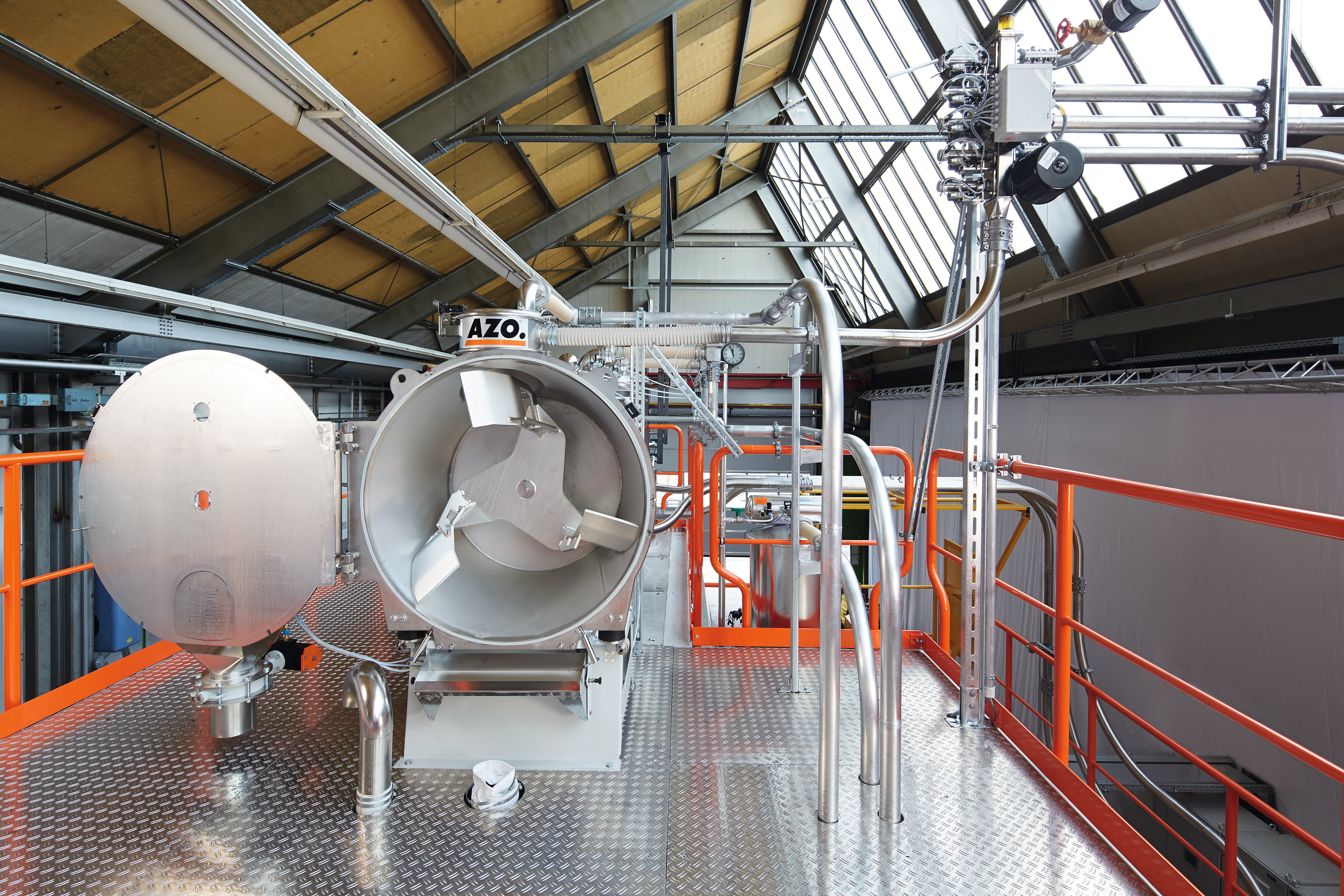
The handling of polymers is largely uncritical. However, a variety of products have to be combined and mixed. For this purpose, the individual polymer components are aspirated, precisely weighed and finally homogenised by our AZO®MIXOMAT according to the recipe. The premixes produced in this way are emptied into a subsequent buffer container and a new mixture can be started immediately. The extra-large cleaning door makes the MIXOMAT particularly easy to clean, which also makes it easy to implement quick recipe changes.
Glass fibre is used as an additive to reinforce the base polymer and make it more resistant. However, this reinforcing property is accompanied by a high abrasiveness and thus has a wearing effect on the processing and handling systems. If the right materials and systems are not selected here, this can lead to a considerably shorter service life of the system.
In order to prevent wear as far as possible, attempts are often made to feed the fibres directly from the packaging container into the process by means of gravity. Where this is not possible, conveying systems are needed that are designed for these special requirements.
Our AZO dense phase conveying system is ideal for this purpose. By supplying secondary air, it significantly reduces the friction of the conveyed raw material on the pipe wall and thus also enables higher conveying speeds and distances. In combination with pipes made of a material that is insensitive to abrasion, a long service life with high efficiency can be achieved.
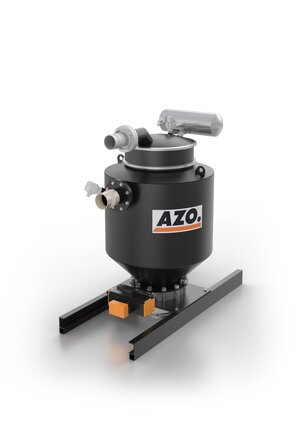
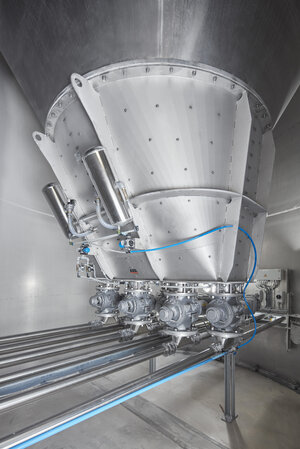
The most frequently used fillers in compounding are chalk and talc. Two raw materials that can be substituted depending on the application, but have different behaviour in handling. What they both have in common, however, is that they have very poor flow behaviour and are difficult to discharge without additional measures.
This can be remedied by fluidisation with air or other gases. The fluidising gas can be introduced either selectively via nozzles or membranes, or over a large area via funnels lined with permeable textiles. The gas loosens the product and reduces the wall friction forces through the resulting air cushion, so that the raw material begins to flow.
Especially with talc, however, care must be taken to ensure that fluidisation does not lead to so-called "shooting", i.e. uncontrolled material flow and thus overfilling of the downstream process. This can be prevented by using locks with narrow gaps.
Titanium dioxide is also known as "whitener" in compounding and is used, among other things, in the production of window profiles. The raw material is not entirely simple in two respects: Firstly, it is both cohesive and adhesive and thus tends to adhere strongly to surfaces and has poor flow properties. Secondly, it is respirable and has been classified as a potential carcinogen by the European Union. For the safe and efficient handling of titanium dioxide, a number of precautions must therefore be taken in raw material automation.
The use of vibratory trays with built-in ventilation can prevent the powder from sticking and allow it to be discharged. The deposition of powder in pipelines can be circumvented by using hose systems. Due to the flexibility of the hose and appropriate mounting, there is constant slight movement, which ensures that any deposited material flakes off again.
The protection of the operating personnel is made possible by special feeding stations. Big bag discharging stations or bag discharging stations equipped with a glove box allow the containers to be opened and emptied into the downstream process without bringing the personnel into contact with the product.
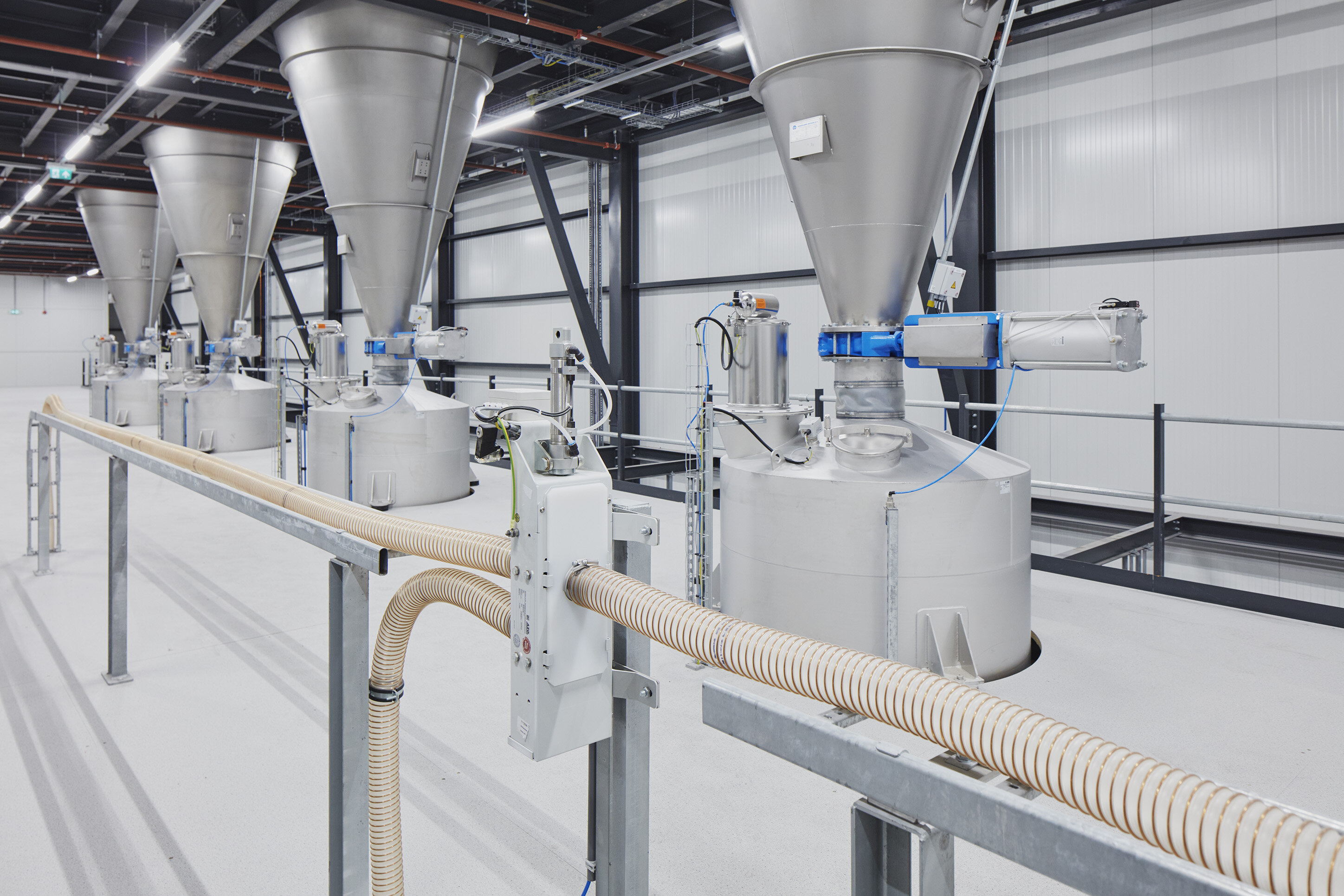
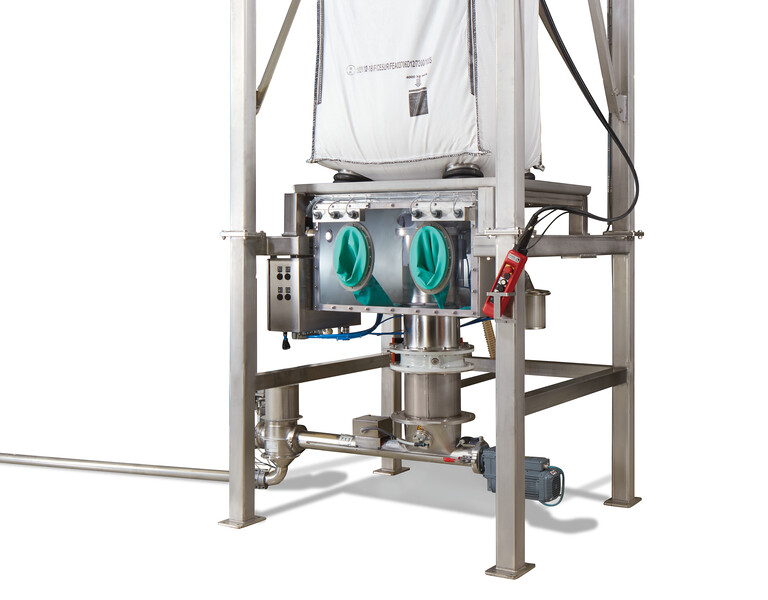
Rubber granulates and elastomers increase elasticity as additives and are used especially in the production of TPE. However, this elasticity of the additives also ensures increased lump formation and adhesion of the raw materials when they are fed into the manufacturing process, which must be taken into account when designing the plant - for example, by using lump breakers.
At AZO, we use spiked rollers for lump breaking. Spiked rollers are shafts mounted on one side with suspended cutting geometries. These shafts are set in rotary motion by a motor. The permanent movement ensures that the raw materials are loosened again and again, thus preventing the formation of lumps and sticking.